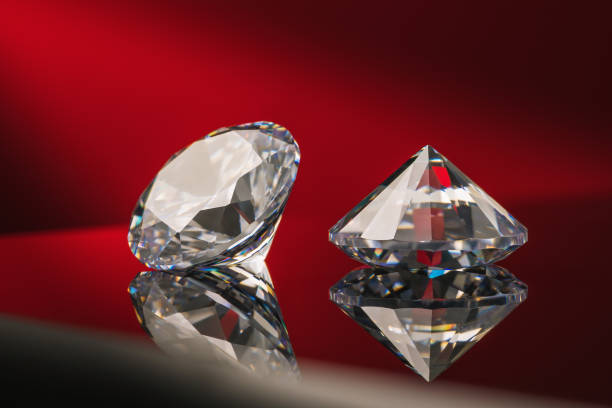
Understanding Lab-Grown Diamonds Cuts: A Comprehensive Guide
When purchasing a diamond, understanding its quality is crucial. The diamond 4c chart is an essential tool that helps buyers evaluate a diamond’s value based on four key characteristics: Carat weight, Cut, Color, and Clarity. This article delves into each of these characteristics and how they contribute to a diamond’s overall quality.
What is the Diamond 4C Chart?
The Diamond 4C chart is a grading system developed by the Gemological Institute of America (GIA) to help consumers make informed decisions when buying diamonds. Each of the four Cs provides important information about the diamond’s quality. By understanding this chart, you can better assess the diamonds available on the market and choose the one that best fits your preferences and budget.
Carat Weight in the Diamond 4C Chart
The first “C” in the Diamond 4C chart stands for Carat weight, which measures the size of the diamond. One carat is equivalent to 0.2 grams. Larger diamonds are generally more valuable, but the carat weight should not be the sole determining factor in choosing a diamond. It’s essential to balance carat weight with the other Cs for a more comprehensive evaluation.
The Cut of a Diamond
The second “C” in the Diamond 4C chart refers to the Cut of the diamond, which significantly impacts its brilliance and overall appearance. A well-cut diamond reflects light beautifully, resulting in enhanced sparkle. The GIA grades cut on a scale from Excellent to Poor. Understanding how the cut influences the diamond’s aesthetics will help you select a stone that shines brilliantly in any setting.
Color Grading in the Diamond 4C Chart
The third “C” in the Diamond 4C chart is Color, which assesses the hue of the diamond. Diamonds are graded on a scale from D (colorless) to Z (light yellow or brown). Colorless man made diamonds are rarer and more valuable, while those with noticeable color can be less expensive. However, the impact of color can vary depending on the diamond’s cut and the setting in which it will be placed. Knowing how color affects the overall beauty of a diamond is vital for making an informed choice.
Clarity: The Final C in the Diamond 4C Chart
The final “C” in the Diamond 4C chart is Clarity, which measures the presence of internal or external flaws known as inclusions and blemishes. Clarity is graded on a scale that ranges from Flawless (no inclusions visible under 10x magnification) to Included (inclusions visible to the naked eye). Understanding clarity can help you choose a diamond that looks clean and brilliant, even when viewed up close.
Putting It All Together: The Diamond 4C Chart in Practice
When using the Diamond 4C chart, it’s essential to consider how each characteristic interacts with the others. For example, a smaller carat diamond with an excellent cut may appear more brilliant than a larger diamond with a poor cut. Similarly, a diamond with a slight color tint may still be stunning if it has a high-quality cut. Evaluating these factors collectively will help you find the perfect diamond for your needs.
The Importance of Certification
Always look for diamonds that come with a grading report from a reputable gemological laboratory when referencing the Diamond 4C chart. Certification ensures that the diamond has been independently evaluated based on the four Cs, providing you with confidence in your purchase. GIA and AGS are among the most respected organizations that issue such certifications.
Conclusion
The Diamond 4C chart is an invaluable resource for anyone looking to buy a diamond. By understanding Carat weight, Cut, Color, and Clarity, you can make a more informed decision and select a diamond that meets your aesthetic and budgetary needs. Whether for an engagement ring, a gift, or personal investment, a well-informed choice based on the Diamond 4C chart will ensure you select a gem that you’ll cherish for years to come.





